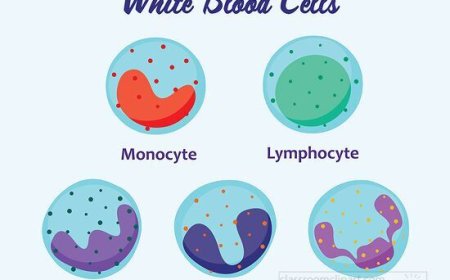Understanding the Major Organs of the Urinary System
Learn how your kidneys, ureters, bladder, and urethra work together to filter blood and remove waste. Discover how urine is formed and exits the body.
💧 Major Organs of the Urinary System
🧠 Introduction: The Organs That Keep You Clean and Balanced
Every moment of every day, your body is producing waste—from breaking down food, using energy, and just keeping your cells working. If that waste built up, it could make you very sick. That’s why you have the urinary system—a powerful team of organs that filters your blood, removes harmful substances, and keeps your fluids in balance. These organs work together to make urine, store it, and eventually remove it from the body.
In this article, you’ll explore the four major organs of the urinary system: the kidneys, ureters, bladder, and urethra. You’ll also learn how they work as a system to help your body stay healthy and clean.
🧬 The Kidneys – The Filters of the Body
The kidneys are two bean-shaped organs that sit toward the back of your body, just below your rib cage—one on each side of your spine. Even though they’re only about the size of a fist, the kidneys are incredibly powerful. Their main job is to filter waste and excess water out of your blood, turning it into urine.
Each kidney contains about one million nephrons, which are tiny filtering units. As blood flows through the kidneys, the nephrons remove substances your body no longer needs, like urea (a waste product from protein), extra salts, and toxins. The kidneys also help keep your body in balance by controlling how much water is in your blood, maintaining the right levels of important minerals like sodium and potassium, and releasing hormones that affect blood pressure and red blood cell production.
🚰 The Ureters – The Transport Tubes
Once urine is made in the kidneys, it needs a way to leave. That’s where the ureters come in. These are two thin, muscular tubes—one coming from each kidney—that carry urine down to the bladder.
Urine doesn’t just drip down the ureters. These tubes actually use a type of muscle movement called peristalsis (per-uh-STALL-sis), which squeezes the urine along in little waves, similar to how food moves through your digestive system. The ureters are built with special valves that stop urine from flowing back into the kidneys, which helps protect your body from infection.
🫙 The Bladder – The Storage Tank
The bladder is a hollow, balloon-like organ located in the lower part of your abdomen, behind your pelvic bone. Its job is to store urine until your body is ready to release it. As the bladder fills, it stretches. A healthy bladder can hold between 1 to 2 cups of urine, though this amount varies from person to person.
Inside the bladder, there are stretch receptors—special sensors that send messages to your brain when it’s time to go to the bathroom. The bladder is made of muscle that contracts (tightens) when you urinate and relaxes when it’s filling. At the bottom of the bladder is a ring-shaped muscle called a sphincter that acts like a valve, staying tightly closed until you're ready to release the urine.
🚿 The Urethra – The Final Exit
The urethra is the tube that carries urine from the bladder out of the body. It is the final step in the urinary system. The urethra is lined with muscles that help keep urine from leaking out until you're ready to go.
In females, the urethra is short—about 1.5 inches long—and opens just in front of the vagina. In males, it is much longer—about 8 inches—and passes through the penis. Even though it’s small, the urethra plays a big role in controlling when and how urine leaves the body. It’s controlled by both involuntary muscles (which work automatically) and voluntary muscles (which you control when you decide to use the restroom).
⚙️ How These Organs Work as a Team
The organs of the urinary system are like a perfectly timed machine. They must all work together for the system to succeed.
Here’s how the process works from start to finish:
The kidneys filter your blood and produce urine.
The urine flows down the ureters to the bladder.
The bladder stores the urine until it's full.
When you're ready, the urethra carries the urine out of your body.
This process happens many times every day and is essential for staying healthy. If even one part of this system stops working properly, it can cause serious health problems like infections, blockages, or kidney failure.
🧠 Vocabulary List
Urinary system – The group of organs that remove liquid waste and control water balance
Kidneys – Organs that filter blood and make urine
Nephron – Tiny filtering unit inside each kidney
Ureters – Tubes that carry urine from the kidneys to the bladder
Bladder – A muscular sac that stores urine
Urethra – The tube that lets urine exit the body
Sphincter – A ring-shaped muscle that opens and closes to control flow
Peristalsis – Muscle movements that push urine through the ureters
Urea – A chemical waste from protein that is removed in urine
Stretch receptors – Sensors in the bladder that signal when it’s full
❓ Interactive Quiz: Let’s Test What You Know!
1. What is the main function of the kidneys?
A. Pump blood
B. Make urine by filtering waste
C. Help you breathe
D. Store vitamins
2. Where is urine stored before it exits the body?
A. Kidney
B. Ureter
C. Bladder
D. Lungs
3. What muscle helps keep urine in the bladder until you’re ready to go?
A. Nephron
B. Urethra
C. Sphincter
D. Artery
4. What are ureters responsible for?
A. Producing blood cells
B. Carrying urine from kidneys to bladder
C. Cleaning your skin
D. Controlling heart rate
5. Which part of the urinary system is different in length between males and females?
A. Kidney
B. Bladder
C. Urethra
D. Nephron
🟢 Answers: 1-B, 2-C, 3-C, 4-B, 5-C
⭐ Kid-Friendly Summary
Your urinary system has four important organs that help keep your body clean. The kidneys filter your blood to make urine. The ureters carry the urine to your bladder, where it’s stored until you’re ready to go. Then, the urethra lets it out. These organs work together all the time to keep your body safe from harmful waste. That’s why staying hydrated and going to the bathroom when you need to is so important!
🤯 Fun and Interesting Facts
Each kidney has around one million nephrons—that’s a lot of tiny filters!
Your bladder can expand like a balloon and shrink back after emptying.
Some people live with just one kidney, and it can do the job of both.
The ureters use wave-like movements to push urine, even when you’re lying down.
If you hold in urine for too long, it can cause your bladder muscles to weaken over time.



















































